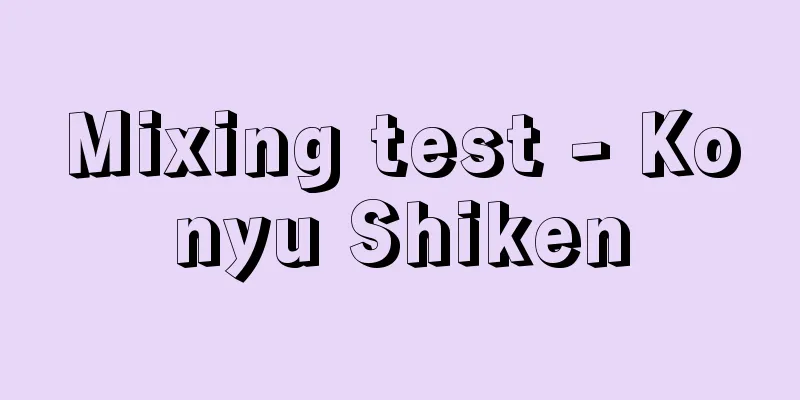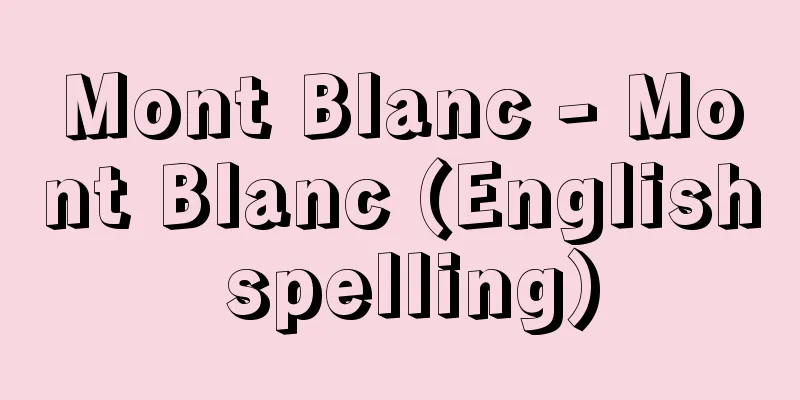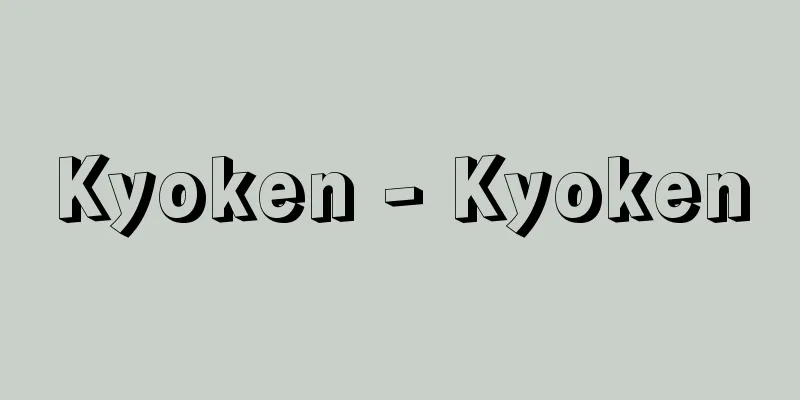Dialect - Hougen

Languages and dialectsHuman languages differ depending on where they live. Among the differences between different locations, dialects are differences within a single language. There are various methods proposed to distinguish how different words must be to be considered languages and how similar they must be to be considered dialects. The very different Chinese languages are grouped together as Chinese, and Spanish and Portuguese, which branched off from Latin, are considered separate languages because of politics and culture rather than language. In this sense, the dialects of the Ryukyu region are in a delicate position with respect to Japanese. When the Ryukyu Kingdom was established in the Amami and Okinawa islands, and the language of its capital Shuri was written down and understood throughout the country, it could be considered to have had the status of a "Ryukyuan language". However, after the Meiji period, it was incorporated into Kagoshima Prefecture and Okinawa Prefecture, and the same standard language as the mainland came to be used in writing, education, and administration, and it lost its status as an independent language. Furthermore, it has been linguistically proven that it is in fact a language that branched off from Japanese, and now it is treated as a "Ryukyuan dialect," one of the two major dialects of Japanese, along with the mainland dialects. [Inoue Fumio] Common language and dialectsDialects are also seen in opposition to common language or standard language. Common language and standard language also have their roots in some dialect, but once they were established, they are viewed with a completely different value system than other dialects. The biggest difference between common language and standard language is that it is also used as written language. [Inoue Fumio] Various dialectsDialects as systemsWhen we think of dialects, we usually think of differences in words (colloquial speech). However, if we consider all regional differences in language to be called "dialects," then differences in pronunciation, accent, and grammar are also important. Furthermore, when we talk about the "dialect" of a region, it also includes the same elements as the standard language. In other words, as a linguistic system, dialects have the same value as the standard language. Here, we will first look at differences in words. [Inoue Fumio] Famous dialectsAs the saying goes, "language is the handprint of a nation," there are many dialects in various parts of Japan. Among the various characteristics, there are some that people in the region have become aware of and have become like chanting words. Many of these words capture the characteristics of commonly used words, pronunciations, and accents, such as "Batten in Nagasaki," "Zuuzu in Izumo," "Nonhoi in Mikawa," "Raikon (radish) in Saro (Sado)," "Beramme (Berabome) in Tokyo's downtown area," and "Shiriagari tone in Tochigi (Ibaraki)." There are also dialects that are unique to a certain region and cannot be understood in other places, such as beccha (different) in Noto and ikunikāran (I will go) in Kochi. Dialects are sometimes used as tourist souvenirs, and curtains, hand towels, and tea bowls with dialect words written on them, as well as postcards with dialect conversations, are sold. These are words with unusual expressions that people from other regions have no idea about, including words that are famous throughout the country, such as "menkoi" in Tohoku, "akan" in Kansai, and "yoka" in Kyushu. [Inoue Fumio] Unnoticed dialectConversely, there are expressions that have regional differences, are only used in certain regions, and are not found in the standard language, but are difficult to notice. Examples of this are naosu (to put away) in Western Japan, kowai (tired) throughout the country, and tobu (to run) in the Chubu region. Many of these expressions have the same form as the standard language but a different meaning. For words that are not often used in public, dialect differences are even less likely to be noticed, and they may even be used in literary works. Examples include urker (in Tohoku, to soften), kushi de kami wo toku (in Western Japan), miso soup wo moru (in Tohoku), and gohan wo tsugu (in Western Japan). On the other hand, because words are used openly in public, regional differences can sometimes go unnoticed. Examples include "motor pool" (parking lot) in Kansai, "kōku/kōka" (school district) in Western Japan, "kōji" (school time) throughout Eastern Japan, and raful (blackboard wiper) in Kagoshima. Even among words that are thought to be nationally common, there are regional differences. It is common for people in western Japan to pronounce "Oita" (dive) as "daibun" and "difficult" as "muzukashii." [Inoue Fumio] Dialectal background of the common languageSome of the national common words have been adopted from expressions originally used in western Japan. We investigated the everyday use of several common word forms and plotted the center of their distribution on a map ( ; the length of the line indicates the national average prevalence). Words such as tsuyu (rainy season), ie, osoroshii, and tsurara, circled in A, are expressions that are particularly common in the Kinki, Chugoku, and Shikoku regions and have been adopted into the national common language. In contrast, C is an example of a word from eastern Japan, particularly the Kanto region, that has been adopted as the national common language. Words that have spread nationwide, such as B, were probably originally used in Kansai or Kanto. As can be seen, the common language that we think of is continuous with dialects in many ways. [Inoue Fumio] Unique dialectThe above are mainly examples where the word form (way of saying) itself differs from standard Japanese (and some that are completely the same). In dialects of various regions, there are unique words not only whose word form does not match standard Japanese, but also whose meanings cannot be translated into standard Japanese. A typical example is the well-developed vocabulary related to snow in snowy regions. In snowy regions, various words (unique words) have developed that cannot be expressed in a single word in standard Japanese, such as "the clump of snow that forms between the teeth of geta (wooden clogs)" (bocco, mocco, dengoro) and "the falling of snow that has accumulated on tree branches" (shizu(ore)). Other examples include names related to folklore, such as dondoyaki and sanaburi, and when an event does not exist in the Tokyo area, one has no choice but to adopt the expression in the dominant dialect. In other regions, there are words with meanings that do not exist in standard Japanese. In the Chugoku region, "pain" is called by different verbs depending on the state of the event. The word azumashii in northern Tohoku and Hokkaido cannot be translated into standard Japanese, but it corresponds to "comfortable" in English. Other expressions that cannot be expressed in a single word in standard Japanese include "the uncomfortable feeling when you get wet" (yaba-tsui, Tohoku) and "the tingling sensation on your back" (nogeppoi, Kanto). [Inoue Fumio] Missing WordsConversely, it should also be noted that there are meanings that cannot be expressed in dialects. In areas without the natural, cultural, and social causes mentioned above, words related to them do not develop (for example, there is very little vocabulary for snow in Okinawa). Also, while standard Japanese has well-established logical expressions such as nimo ka kawarazu and masumasu motte, dialects often lack these. Many words that are unique to modern society and relate to fields such as politics, economics, and science do not exist in the original vocabulary systems of dialects. However, dialects are extremely good at expressing the daily lives and feelings of the people of a particular area, and for speakers, dialects are indispensable. [Inoue Fumio] Differentiation and integrationDialect differencesThe extent of dialect differences generally depends on human interaction. Dialect differences are greater in places with poor transportation and little interaction (remote islands and mountainous areas). Dialect differences are generally greater even in self-sufficient regions. In contrast, in modern nations where transportation is well developed and there is active human interaction, dialect differences are generally smaller. Dialect differences tend to disappear quickly, especially in nations with well-established centralized systems (France, for example). Conversely, in countries where feudal lordships developed and the establishment of a modern unified nation was delayed, dialect differences have developed (Japan, Germany, Italy, for example). [Inoue Fumio] Dialect integration and standardizationThere are large differences in language in primitive societies around the world. Even in ancient primitive societies, there was probably little interaction between people, so the differences in dialects were large. If so, historically, it is possible to imagine a change in the direction of dialect differences becoming smaller as we approach the present day. On the other hand, comparative linguistics considers the process in which a homogeneous proto-language spreads to various places, differentiates, becomes separate dialects, and the differences grow even larger, becoming a separate language (phylogenetic tree theory). The dialect differences of today did not exist in the past. As mentioned above, the contradictory movement of changes in the direction of language differences becoming larger and changes in the direction of differences becoming smaller can also be found in dialects. The process of integration in which a dialect with a central influence spreads to the surrounding areas, reducing the dialect differences, has always been ongoing throughout history. The "dialect periphery theory" and the "wave theory" in historical linguistics are based on a similar idea. When a tribe or nation expands its influence rapidly, it widens the scope of its language and causes other languages within its territory to become extinct, which is also a movement towards integration. The "standardization" observed in various parts of modern society is also a movement towards integration. The phenomenon of standardization has progressed throughout history, with local dialects being lost and becoming closer to the language of Kyoto or Edo. For example, only fragmentary vestiges of the dialects of eastern Japan in the Nara period remain, and the current language of eastern Japan can be explained as having been formed in large part by the transmission of Kyoto dialects from the Heian period. [Inoue Fumio] New dialectHowever, on the other hand, the theory of isolated change is also valid, which holds that dialects change independently in remote areas. Even now, new dialects are being born in various places, and there is a movement towards differentiation. When the younger generation uses new words different from those used by the elderly, and the speakers themselves are aware that it is not a national common language, it is called a "neo-dialect." There are also examples of widespread development, such as the change from "yokanbe" (yokanbe) used by the elderly to "ibe" (yokaro) used by the young in many areas of the Kanto and Tohoku regions, and the change from "yomazatta" and "yomananda" to "yomankatta" (didn't read it), and from "yamaja" to "yamaya" (it's a mountain) in various parts of Western Japan. "~jan (ka)" originated in the Tokai region, and is now spreading from Tokyo to northern Japan. In the world of children, new words are created and spread regardless of the common language. New calls for "janken" are also emerging in various places, and in Tokyo, the call "chikketta" is being introduced from Chiba. This new dialectization is still progressing in various ways all over the country, including the Kanto region and Tokyo itself. This can be seen as one part of the historical trend of dialect differentiation. In this way, the current phenomenon of standardization and new dialects is also a recent part of the overall historical trend of integration and differentiation of Japanese dialects. [Inoue Fumio] Dialect formationWhen new people move in, it seems that two or three hundred years of settlement is not enough time for new dialect differences to fully develop. For example, the dialect differences between North American English and South American Spanish and Portuguese are still not that great. The inland area of Hokkaido only has a history of settlement of about 100 years, and the immigrants came from a variety of places. As a result, a language close to the national standard was adopted, but there is a considerable influence of the Tohoku dialect, including the accent. Hokkaido's unique way of speaking and new regional differences within Hokkaido are only just beginning to develop. It seems that it takes hundreds or even thousands of years for major dialect differences to form. Dialect differences within Japan probably formed before written records were even in existence. [Inoue Fumio] Regional dialectsDialect division"Dialect divisions" are used to classify dialects from the perspective of their regional differences. Here, we present divisions that emphasize phonology and accent, and divisions that emphasize grammar and vocabulary ( and ). First, Japanese is divided into mainland dialects and Ryukyu dialects. Next, the Hachijo dialect is separated, and the mainland dialects are divided into east and west, but the Tohoku and Kyushu dialects are quite different from the others. [Inoue Fumio] History of Japanese and DialectsLet us try to relate the characteristics of regional dialects to the history of the Japanese language. Although the Ryukyu dialect has developed in its own direction, remnants of ancient Japanese are often noted. The dialect of Kyushu also retains vestiges of medieval Japanese in its pronunciation and grammar. The dialects of the Kinki, Chugoku, and Shikoku regions reflect aspects of the early modern Kamigata dialect. Of these, the dialect of the Kinki region shows even more recent changes. The dialects of the Chubu and Kanto regions are close to Tokyo dialect, which forms the basis of modern common language. Among these, the western Kanto dialect has some similarities to the townspeople's language of the Edo period. The dialects of the Tohoku region sometimes retain old Japanese, but in terms of grammar and phonology, there are many new changes. Next, let us look at the situation across the country for each individual linguistic phenomenon. It is believed that the various dialects of Japan evolved from the words recorded in documents from the Nara and Heian periods. We will take an overview by focusing on whether they retain aspects of the Japanese language of the older era, or whether they have undergone unique changes compared to the modern standard language. [Inoue Fumio] vocabularyIn linguistic (dialect) geography, the names of individual words have been drawn one by one on maps to trace their evolution. In general, old Japanese expressions remain in the Tohoku region and Kyushu. These include the Akizu word for "dragonfly" and the words "nai" and "nae" for "earthquake." Old expressions also remain in Shikoku, Sanin, and the Kii Peninsula. In contrast, in the Kinki region and along the Seto Inland Sea, there are many examples of relatively new expressions that are thought to have originated in Kyoto or elsewhere since the early modern period. These include "katakuma" for "shouldercarriage," "kaza" for "smell," and "chokeru" for "play around." When examining dialect distribution in terms of the frequency of use of words, many of the words that are used frequently in daily life (e.g. "takai" and "hito") were established in the past, and the same expressions are widespread throughout the country. In contrast, words that are used only occasionally (e.g. "kamakiri" and "tsumuji") have various expressions in different regions, and not many old expressions remain. When divided into the ancient "Japanese words" (Yamato kotoba), the "Chinese words" that have been widely used since the Middle Ages, and the "foreign words" that were introduced from Europe and other places in early modern and modern times, the overwhelming majority of dialect vocabulary is Japanese. There are many examples where Japanese words are used to express things that are expressed in standard Japanese using foreign words (e.g. tamana = cabbage). However, in rare cases, Chinese words or foreign words that do not exist in standard Japanese are used. Words based on Chinese words such as "too much" (excessive) and "ridiculous" (smile) are sometimes used (with changed meanings) near castle towns. On the other hand, Western Japan has foreign words that were introduced from Western Europe long ago, such as banco (a seat) and bobra (a pumpkin, both from Portuguese). [Inoue Fumio] Phonemes and vowelsIt is said that there were eight vowels in the Japanese language during the Nara period, but with the exception of some Ryukyu dialects, modern Japanese dialects were born from the five-vowel system from the Heian period onwards. Later, in order to avoid consecutive vowels, consecutive vowels were grouped together to create new vowels in various dialects. The elderly in the Nagoya area have eight vowels, while the central Niigata dialect has seven, but both are new. On the other hand, there is a movement to eliminate the distinction between vowels and reduce their number, and in some dialects of Okinawa and Tohoku, there are three or four vowels. In most Tohoku dialects, there are six or five vowels, but the distinction is eliminated depending on the syllable, and shi and su, ji and zu, chi and tsu, i and e, etc. are pronounced the same. This is because the tone of the vowels in the Tohoku dialect is different from others. In this respect, a similar phenomenon can be seen in Tohoku, San'in, Ryukyu, etc., but it is thought that this is not a remnant of old pronunciation, but rather that each area changed independently. [Inoue Fumio] Phonology and consonantsConsonants may retain their old pronunciation in a dialect, or may change in their own way in different regions. The consonant in the "ha" row was originally "p", but this pronunciation remains in various parts of Okinawa Prefecture. It later changed to "fa", "fi", "fu", "fe", and "fo", but this pronunciation remains in Tohoku, the Japan Sea coast, Okinawa Prefecture, and other areas. At the same time, most of this region still retains the pronunciations "kwa" and "gwa", as in "Kannon Kwannon" and "Gantan Gwantan". Kwa and gwa are pronunciations that arose during the Heian period. The voiced consonants in the "ga", "za", "da", and "ba" rows were once pronounced with a nasal tone, and even today, in the Tohoku region and Shikoku, pronunciations such as "kangami" (mirror) and "onbi" (belt) remain. However, in the Tohoku dialect, the "ka" and "ta" row consonants have become voiced, sounding voiced like the "ga" and "da" rows in standard Japanese, which is probably a new change from later times. On the other hand, in the Ryukyu dialect, a new distinction has been made between consonants depending on whether the breath is strong or weak. "Se" was once pronounced as "she" [ʃe], and the pronunciation "se" spread from the Kanto region during the Muromachi period. Even today, the old "she" pronunciation is often heard in western Japan. In this way, both ends of the country have retained the old pronunciation while also introducing new changes. [Inoue Fumio] accentThe Keihan accent of the Kinki and Shikoku regions has not changed much since the Nara and Heian periods. The Tokyo accent of the Chubu region and east and the Chugoku region is said to have evolved from the Keihan accent. A further variation of the Tokyo accent is the special accent found in southwest Kyushu and around Saitama Prefecture. The Ikkei (no accent) accent found in central Kyushu and from Ibaraki to Miyagi prefectures is a dialect that does not distinguish between high and low sounds such as "hashi" (chopsticks) and "hashi" (bridge), and is said to be the ultimate in accent simplification. The accent of the Ryukyu dialect is a result of repeated changes from the same accent as Kyushu. In this way, with regard to accents, the Kinki region, which has been the cultural center since ancient times, has maintained its old accent, while the surrounding areas have lost their distinction and lost their accent. Until recently, a change towards a breakdown in accents was observed in various places, in the form of generational differences. [Inoue Fumio] grammarHere, we will first discuss conjugation forms in the grammar, starting with the conclusive and attributive forms. The conclusive forms of verbs and adjectives in the Ryukyuan dialect, such as Kachun and Akasan, originated from structures such as KAKI + IRI and AKA + ARRI, and appear to have developed in a direction different from modern Japanese. In Miyakojima, the conjunctive form of verbs is also used for the attributive form, but this is considered to be a remnant of the old form from before the differentiation of conjugation forms in ancient Japanese. In the dialects of eastern Japan during the Nara period, the attributive forms of adjectives and verbs were different from those of western Japan, but today only some remain. Next, we will discuss matters other than the conclusive and attributive forms. Regarding the imperative forms of one-step conjugation verbs, there are differences such as ukeyo (ukei) in western Japan and ukero in eastern Japan (and Kyushu). This seems to have been the case from long ago, but in some parts of eastern Japan it was further changed to e-row, like ukere. As a result, both the conditional and imperative forms of both five-step and one-step verbs end in e-row, simplifying conjugation. In Kyoto during the Heian period, conjunctive forms of verbs and adjectives were created. Some have spread to almost the entire country, while others only retain traces of the time in parts of western Japan. The u-sound change, such as かヒタ→こうた and あかく→あこう, is mainly distributed in western Japan, and eastern Japan has not adopted this change. In adjectives, in Kyushu, "ureshuushite" is a remnant of an old way of saying "ureshikute." Also, the ka ending of adjectives in southwestern Kyushu (such as よか) is a remnant of the kari conjugation of adjectives that was used around the Heian period. In the Tohoku region, on the other hand, the final form akai appears in all conjugated forms of adjectives instead of the stem, such as akai-katta, akai-ku-naru, and akai-kereba, showing a tendency toward simplification of conjugation and even non-conjugation. Next, let's look at the types of conjugation of verbs. In the Kyoto dialect of the Heian period, there were nine types of verb conjugation: yodan conjugation, jodan and shidan ichidan and nidan conjugation, and ka, sa, na, and ra-row irregular conjugation. In modern standard Japanese, the distinction between ichidan and nidan conjugation has been eliminated, and yodan, nahen, and rahen have become godan conjugations, so that conjugation has been simplified to godan conjugation, (jo and shi) ichidan conjugation, and irregular conjugation (kahen and sahen). However, in the dialects of Kyushu and the Kii Peninsula, there are still traces of nidan conjugation, such as ka-kuru. In Western Japan, there are also traces of nahen, such as shinuru. However, in parts of Kyushu, there is a new trend of changing ichidan conjugation to (ra-row) godan conjugation, such as miran and mire. In the Tohoku and Kanto regions, in addition to simplifying conjugation to the same extent as standard Japanese, there is also a movement to change sahen to sanee, and kahen to kinai, further reducing the number of conjugation types. Thus, with regard to verbs and adjectives, there is a tendency for older forms to be preserved in southwestern Japan and for newer, simplified forms to be used in northeastern Japan. [Inoue Fumio] Dialect AwarenessLooking back at history from the perspective of awareness and images of dialects, up until the mid-Edo period, the dialect of the Kinki region, and especially Kyoto, was considered to be a clean dialect. At that time, the dialect of eastern Japan was seen as rough and rough, but as Edo grew into a large city, the dialect of Edo and Tokyo was considered to be the correct dialect. In large cities, there was a strong awareness of the correctness of dialect, and there was a force that suppressed irregularities in pronunciation and grammar. In areas far from Kyoto and Tokyo, the awareness of the correctness of dialect was not as strong, and it is likely that unique changes occurred there. [Inoue Fumio] "Japanese Dialects" by Shibata Takeshi (Iwanami Shinsho)" ▽ "Language: East and West" by Tokugawa Munekata (The World of Japanese Language 8, 1981, Chuokoron-Shinsha)" ▽ "Dialects" edited by Ohno Susumu and Shibata Takeshi (Iwanami Lectures on Japanese 11, 1977, Iwanami Shoten)" ▽ "Lectures on Dialectology" edited by Iitoyo Takekazu et al., all 10 volumes (1982-, Kokusho Kankokai)" ▽ "Dialects and Standard Language" edited by Oishi Hatsutaro and Uemura Yukio (1975, Chikuma Shobo) [References] | | | [Supplementary material] |©Shogakukan "> Distribution center of standard word forms (Figure A) ©Shogakukan "> Dialect divisions that emphasize phonology and accent (Fig. ©Shogakukan "> Dialect divisions that emphasize grammar and vocabulary (Figure C) Source: Shogakukan Encyclopedia Nipponica About Encyclopedia Nipponica Information | Legend |
言語と方言人間のことばは住む場所によって違う。場所による違いのうち、一つの言語の内部の差が方言である。 どの程度ことばが違ったら言語としての差で、どの程度似ていたら方言としての差なのかについては、さまざまな判別法が唱えられている。中国の非常に違ったことばが中国語としてまとめられ、ラテン語から分かれたスペイン語・ポルトガル語などが別の言語とされるのは、むしろ言語以外の、政治や文化が基準になっている。この意味で、日本語に関して微妙な位置にあるのが琉球(りゅうきゅう)地方の方言である。かつて奄美(あまみ)・沖縄諸島に琉球王国が成立し、その首都首里のことばが文字に記され、全土に通じた時代には、「琉球語」としての地位をもっていたとみなしうる。しかし、明治以降、鹿児島県・沖縄県に組み入れられ、本土と同じ標準語が文章でも教育・行政でも使われるようになって、独立の言語としての地位を失った。さらに、実は日本語から分かれてできたことばであることが言語学的に証明されたこともあり、いまは本土方言と並んで、日本語の二大方言の一つ「琉球方言」として扱われている。 [井上史雄] 共通語と方言方言はまた共通語・標準語と対立してとらえられる。共通語・標準語も、起源をつきつめるとどこかの方言が基盤にあるが、いったん成立すると、他の方言とはまったく違った価値観でとらえられる。方言とのいちばんの違いは、文章語としても使われることである。 [井上史雄] いろいろな方言体系としての方言方言というと、普通、単語(俚言(りげん))の違いがあげられる。しかし、土地によることばの違い全体を「方言」とよぶというとらえ方によれば、発音・アクセントや文法の違いも重要である。また、ある地方の「方言」というときには、共通語と同じ要素も含まれる。つまり、方言は、言語体系としては共通語と同等の価値をもつ。ここではまず単語の違いを取り上げる。 [井上史雄] 有名な方言「ことばは国の手形」ともいわれるように、日本の各地にはいろいろな方言がある。さまざまな特色のうちには、その地域の人が気づいて唱えことばのようにしているものがある。「長崎のバッテン」「出雲(いずも)ズーズー」「三河のノンホイことば」「サロ(佐渡)のライコン(大根)」「東京下町のベランメー(べらぼうめ)ことば」「栃木(茨城)のしり上がり調」のように、よく使われることばや発音・アクセントの特徴をうまくとらえたものが多い。また、ある地方独特で、他には通じないとされる方言がある。能登(のと)のベッチャ(違う)、高知のイクニカーラン(行くだろう)などである。方言は、観光土産(みやげ)に利用されることがあり、方言の単語を記したのれん・手拭(てぬぐい)・茶碗(ちゃわん)や、方言会話を記した絵葉書などが売られている。これらに利用されるのは、他の地方の人には意味の見当のつかないような変わった言い方の単語である。このなかには、東北のメンコイ、関西のアカン、九州のヨカ(よい)などのように、全国的に有名なことばもある。 [井上史雄] 気づかない方言これと逆に、地域差があって、ある地方でしか使われず、共通語にもない言い方なのに、気づかれにくいものがある。西日本のナオス(しまう)、全国各地のコワイ(疲れた)、中部地方のトブ(走る)などがこの例であり、語形が共通語と一致して意味がずれているものに多い。公の場であまり使われないようなことばだと、方言差があることに気づかれることがさらに少なく、文学作品などにも使われることがある。ウルケル(東北で、ふやける)、櫛(くし)で髪をトク(西日本)、みそ汁をモル(東北)、ご飯をツグ(西日本)などである。これに対し、公的な場で堂々と使われることばであるために、かえって地域差があることに気づかないことがある。関西の「モータープール」(駐車場)、西日本の「校区・校下」(学区)、東日本各地の「校時」(~時間目)、鹿児島のラーフル(黒板ふき)などである。全国共通語と思われていることばのなかにも、地域差を示すものがある。「大分」(ダイブ)をダイブン、「難(ムズカ)シイ」をムツカシイと読むのは西日本の人に多い。 [井上史雄] 共通語の方言的背景全国共通語のなかには、そもそも西日本の言い方だったものが採用された例がある。いくつかの共通語形の日常での使われ方を調べ、分布領域の重心を地図に示した(。線の長さは全国の平均普及率を示す)。Aで囲んだ中のツユ(梅雨)・イエ・オソロシイ・ツララなどは、近畿地方や中国・四国地方にとくに多い言い方が共通語に採用されたものである。これに対し、Cは、東日本とくに関東付近のことばが共通語として採用された例である。Bのように、全国的に普及したことばも、もともとは関西か関東で使われていたものだろう。以上のように、われわれが考える共通語は、さまざまな点で方言と連続的である。 [井上史雄] 独特の方言以上であげたものは、おもに語形(言い方)そのものが共通語と食い違うような例(とまったく一致する例)であった。各地の方言には、語形が共通語と一致しないものだけでなく、単語の意味が共通語に訳せないような、独特なことばがある。雪国で雪に関する語彙(ごい)が発達しているのが典型的な例である。「下駄(げた)の歯の間につく雪の固まり」(ボッコ、モッコ、デンゴロ)、「木の枝にたまった雪が落ちること」(シズ(オ)レ)など、共通語では一語で表せない意味のことば(特有語)が、雪国ではさまざまに発達している。ドンドヤキ、サナブリなど、民俗に関する名称もこの例であり、東京付近にその行事が存在しないときには、有力な方言の言い方を採用してよぶしかない。このほかにも各地に、共通語にない意味の単語がある。中国地方では、「痛む」ことを、そのようすによって別々の動詞で呼び分ける。東北地方北部や北海道のアズマシイということばは、共通語には訳せないが、英語ならcomfortableにあたる。「水にぬれたときの不快な感じ」(ヤバツイ、東北)や、「背中などがチクチクする感じ」(ノゲッポイ、関東)なども、共通語では一語で表せない。 [井上史雄] 欠落語以上と逆に、方言では言い表せない意味のあることも注意すべきである。先にあげたような自然・文化・社会による原因がない地域では、それに関することばは発達しない(たとえば、雪についての語彙は、沖縄では非常に少ない)。また、共通語には、ニモカカワラズとかマスマスモッテのような論理的表現が整っているが、方言には欠けていることが多い。政治・経済・科学などの分野に関する、近代社会特有の多くの単語も、方言本来の語彙体系には存在しない。ただ、その土地の人の日常の生活や感情に関しては、方言は実によく表現しており、話し手にとっては、方言はかけがえのないことばである。 [井上史雄] 分化と統合方言差の大小方言差の大小は、一般に人間の交流に左右される。交通不便な所、交流の少ない所(離れ島や山間部)では方言差が大きい。自給自足的な地域でも一般に方言差が大きい。これに対し、交通手段が発達し、人の相互交流の盛んな近代国家では、方言差は一般に小さい。ことに中央集権制度の整った国家では、方言差が早く失われる傾向にある(たとえばフランス)。これと逆に封建領主制が発達し、近代的統一国家の成立の遅れた国では、方言差が発達している(たとえば日本やドイツ、イタリア)。 [井上史雄] 方言の統合・共通語化世界各地の未開社会では、ことばの違いが大きい。太古の原始社会でも相互の交流が少なかっただろうから、方言差は大きかっただろう。そうすると、歴史的には、現代に近づくにつれて全体として方言差が薄れる方向への変化が考えられる。一方、比較言語学では、等質な祖語が、各地に散らばって分化し、別々の方言になり、さらに違いが大きくなって、別の言語になるというプロセスを考える(系統樹説)。いまの方言差も、昔はなかったことになる。以上のように、ことばの違いが大きくなる方向への変化と、小さくなる方向への変化という矛盾した動きは、方言のなかにもみいだされる。日本でいえば京都のような、中央の勢力のある方言が周囲に広がり、それまでの方言差を少なくする統合のプロセスは、歴史上つねに進行してきた。「方言周圏論」や歴史言語学でいう「波動説」Wellentheorieも同様な考え方である。ある部族や国家が急速に勢力を広げたために、その言語の通用範囲を広げ、領域内の他の言語を絶滅するのも、この統合への動きである。近代社会の各所で観察されている「共通語化」もこの統合の動きである。共通語化という現象は、各地独特の方言が失われて、京都や江戸のことばに近づいていくという形で、歴史上つねに進行してきた。たとえば、奈良時代の東日本の方言のおもかげは、断片的に残るだけで、現在の東日本のことばは、大部分平安時代の京都のことばが伝わってできたものとして説明できる。 [井上史雄] 新方言しかし逆に、辺境で方言が独自の変化をすると考える「孤立変遷論」も成立する。現在でも各地で新しく方言が生まれており、分化の動きがある。若い世代が老人と違う新しいことばを使い、しかも話し手自身も全国共通語ではないと意識しているもので、「新方言」とよばれる。関東・東北のかなりの地域で老人のヨカンベーから若者のイーベ(よかろう)に交代している例、西日本各地でヨマザッタ・ヨマナンダからヨマンカッタ(読まなかった)に、山ジャから山ヤ(山だ)に変化している例のように、広い地域で進行する例もある。「~ジャン(カ)」は東海地方で発生し、いま東京から北日本に広がりつつある。子供の世界では、共通語とかかわりなく新しいことばがつくられて広まる。「じゃんけん」の掛け声も各地で新しく発生しつつあり、東京には、千葉のほうからチッケッタという掛け声が入りつつある。このような新方言化は、関東地方や東京自体をも含めて、全国各地でいまなおさまざまに進行しつつある。これは、歴史上続いてきた方言の分化という流れの一こまと位置づけることができる。このように、現在の共通語化や新方言のような現象も、統合と分化という日本語方言の歴史全体の流れのなかの最近の一こまなのである。 [井上史雄] 方言の形成移住によって新しく人が住んだときに、新しい方言差が十分に発達するには、定住後2、3百年では不十分なようで、たとえば北アメリカの英語や南アメリカのスペイン語・ポルトガル語の方言差は、いまだにそう大きいものではない。北海道内陸部は100年前後の定住の歴史しかなく、しかも移住者の出身地はさまざまだった。そのため全国共通語に近いことばが採用されたが、アクセントをはじめとして、東北方言の影響がかなりある。北海道独自の言い方、また北海道の中での新たな地域差は、いまやっと発達し始めている。大きな方言差が形成されるには、数百年、千年という期間が必要なようである。日本国内の方言差も、文献以前の時代から形成されてきたのだろう。 [井上史雄] 各地の方言方言区画各地の方言を、相互の地域差という観点から位置づけるのが「方言区画」である。ここでは音韻・アクセントを重視した区画と、文法・語彙を重視した区画を掲げる(・)。まず、日本語は、本土方言と琉球方言に二分される。次に八丈方言が分離され、本土方言は東西に二分されるが、東北と九州は他とかなり異なる。 [井上史雄] 日本語史と方言各地の方言の特色を、日本語の歴史と関係づけてみよう。琉球方言は、独自の方向に発展したものの、古代日本語の残存がよく指摘される。また、九州のことばは、発音や文法などで中世日本語のおもかげをとどめる。近畿・中国・四国地方の方言は、近世の上方(かみがた)語の様相を反映する。なかでも近畿地方のことばは、さらに新しい変化を示している。中部・関東地方のことばは、現代共通語の基盤としての東京語と近い。そのなかで西関東方言は、江戸時代の町人ことばに似る点がある。東北地方の方言は古い日本語を残すこともあるが、文法や音韻では、むしろ新たに変化をおこした点も多い。 次に、個々の言語現象ごとに、全国のようすを見渡そう。日本の諸方言は、ほぼ奈良・平安時代の文献に記されているようなことばから変化したものと考えられる。古い時代の日本語の相を残しているか、それとも現代共通語と比べて独自の変化をおこしたかに着目して、概観しよう。 [井上史雄] 語彙言語(方言)地理学では、個々の語の呼び名を1枚1枚地図に描いて変遷をたどってきた。一般に東北地方や九州には古い日本語の言い方が残る。「とんぼ」をさすアキズ系のことば、「地震」をさすナイ・ナエなどである。また、四国や山陰・紀伊半島などにも古い言い方の残ることがある。これに対し、近畿地方や瀬戸内海沿いには、近世以降に京都あたりで生まれたと思われる比較的新しい言い方の広がる例が多い。「肩車」のカタクマ、「臭」のカザ、「ふざける」のチョーケルなどである。単語の使用頻度数という点から方言分布をみると、日常よく使われる語(たとえば「高い」「人」)は、古い時期に成立したものが多く、全国に同じ言い方が普及している。これに対し、たまにしか使われない語(たとえば「かまきり」「つむじ」)は、各地でさまざまな言い方があり、あまり古いことばは残っていない。古来の「和語(やまとことば)」、中世以来盛んに使われた「漢語」、近世・近代にヨーロッパなどから入った「外来語」のような分け方からみると、方言語彙の圧倒的部分は和語である。共通語では外来語で表すものを、和語で表す例も多い(タマナ=キャベツなど)。ただし、まれには、共通語にない漢語や外来語を用いることもある。城下町付近には、「過分」「笑止」など漢語に基づくことばが(意味を変えたりして)使われることがある。一方、バンコ(腰掛)、ボーブラ(かぼちゃ、ともにポルトガル語から)などのように、西日本には、古く西欧から入った外来語がある。 [井上史雄] 音韻・母音奈良時代の日本語では、母音が8個あったといわれるが、琉球方言の一部を除くと、現代日本の諸方言は、平安時代以降の五母音の体系から生まれたものである。その後、母音が続くのを避けるために、連続する母音をまとめて、各地の方言で新しい母音ができた。名古屋付近の老年層では母音が8個あり、新潟県中央部の方言は母音が7個あるが、ともに新たに生じたものである。一方、母音の区別をなくして数を少なくする動きもあり、沖縄や東北の方言の一部などでは3個とか4個になっている。東北方言の大部分では、母音そのものの数は6個または5個だが、音節によって区別をなくし、シとス、ジとズ、チとツ、イとエなどが同じ発音になる。これは、東北方言の母音の音色が他と違うせいである。この点、東北と山陰と琉球などに似た現象がみられるが、古い発音の残存ではなく、各地で独立に変化したと考えられる。 [井上史雄] 音韻・子音子音については、古い発音が方言に残ることもあり、各地で独自に変化することもある。ハ行子音は古くはpだったが、これは沖縄県各地に残る。その後ファ、フィ、フ、フェ、フォのように変化したが、この発音は東北や日本海岸一帯・沖縄県などに残る。この地域の大部分は、同時に観音クヮンノン・元旦グヮンタンのようなkwa, gwaの発音を残す。kwa, gwaは平安時代に生じた発音である。ガ・ザ・ダ・バ行の濁音の子音は、かつては鼻にかかった発音で、いまも東北地方や四国などにカンガミ(鏡)、オンビ(帯)のような発音が残る。しかし、東北方言でカ行・タ行子音が有声化して、共通語のガ行・ダ行と同じように濁って聞こえるのは、後世の新しい変化であろう。一方、琉球方言では、息が強いか弱いかによる新たな子音の区別が生じている。「セ」は、かつてシェ[ʃe]のように発音されており、室町時代の関東からセ[se]のような発音が広まった。いまでも古いシェの発音は西日本で多く聞かれる。このように、国土の両端では、古い発音を残すとともに、新しい変化も発生させている。 [井上史雄] アクセント近畿・四国地方の京阪式アクセントは、奈良・平安時代以来いままであまり変わっていない。中部地方以東と中国地方などの東京式アクセントは、京阪式アクセントが変化して生じたものとされる。東京式アクセントのさらに変化したものが、九州南西部や埼玉県付近の特殊アクセントである。九州中央部と茨城県から宮城県にかけての一型(いっけい)(無)アクセントというのは、「箸(はし)」と「橋」などの高低の区別をしない方言で、アクセントの単純化の行き着いたものとされる。琉球方言のアクセントは九州と同じアクセントから変化を重ねたものである。このように、アクセントについては、古くからの文化的中心地である近畿地方で昔のアクセントを保ち、周辺ほど崩して、区別を失うという方向への変化がみられる。すこし以前までは、各地で、アクセントの崩れる方向への変化が、世代差の形で観察された。 [井上史雄] 文法ここでは、文法のうちでも活用形について、まず終止形・連体形について述べる。琉球方言の動詞・形容詞の終止形カチュン・アカサンなどは、書キ+居リ、赤サ+有リのような構成から生じたもので、現代日本語とは異なる方向に発展したとみうる。宮古島では、動詞の連用形にあたるものを連体形にも使うが、これは古代日本語の、活用形分化以前の古い形を残すものとされる。奈良時代の東日本の方言では、形容詞と動詞の連体形が西日本と違っていたが、いまは一部に残るだけである。次に終止形・連体形以外について述べる。一段活用動詞の命令形については、西日本のウケヨ(ウケイ)、東日本(と九州)のウケロのような違いがある。これは昔からあったようだが、東日本の一部ではさらにウケレのようにエ段にした。これによって、五段動詞も一段動詞も仮定形・命令形双方がエ段で終わることになり、活用が単純化された。平安時代の京都で、動詞・形容詞の連用形などで音便形が生じた。ほぼ日本全体に普及したものもあれば、西日本の一部のみに当時の名残(なごり)を残すものもある。買(カ)ヒタ―→買(コ)ウタ、赤(アカ)ク―→赤(アコ)ウのようなウ音便は、おもに西日本に分布し、東日本ではこの変化を受け入れていない。形容詞では、九州で「うれしくて」をウレシューシテというのは古い言い方の名残である。また、九州南西部の形容詞のカ語尾(良(ヨ)カなど)は、平安時代ごろに用いられた形容詞のカリ活用の残存である。東北地方ではこれと逆に、形容詞で、アカイ‐カッタ、アカイ‐ク‐ナル、アカイ‐ケレバのように、語幹のかわりに終止形アカイがすべての活用形に現れ、活用の単純化、ひいては無活用化の傾向を示す。次に、動詞の活用の種類をみよう。平安時代の京都のことばでは、動詞の活用が、四段活用、上・下の一・二段活用、カ・サ・ナ・ラ行変格活用の9種類あった。現代共通語では、一・二段活用の区別をなくし、四段・ナ変・ラ変が五段活用になったため、五段活用、(上・下)一段活用、不規則活用(カ変・サ変)などに単純化された。しかし、九州や紀伊半島の方言では、駆(カ)クルのように、二段活用のおもかげを残す。また、西日本には死ヌルのように、ナ変の名残もある。ただし、九州の一部では、一段活用を、見ラン・見レのように、(ラ行)五段活用にする新しい傾向が広がっている。東北・関東地方などでは、共通語と同じように簡易化したものに加え、サ変をサネのように五段化したり、カ変をキナイのように一段化する動きがみられ、さらに活用の種類を少なくしている。このように、動詞・形容詞に関しては、西南日本で古いものを残し、東北日本で新しく簡易化するという傾向がみられる。 [井上史雄] 方言意識方言についての意識やイメージという点から歴史を振り返ると、江戸時代中期までは、近畿ことに京都のことばがきれいなことばとされていた。そのころの東日本のことばは訛(なま)っていて乱暴だとみられていたが、江戸が大都市として成長すると、江戸、東京のことばが正しいことばとされた。大都市では、ことばの正しさに関する意識が強く、発音や文法の乱れを押しとどめる力が働いた。京都や東京から離れた地域ではことばの正しさの意識がそう強くなく、独自の変化を遂げたのであろう。 [井上史雄] 『柴田武著『日本の方言』(岩波新書)』▽『徳川宗賢著『言葉・西と東』(『日本語の世界8』1981・中央公論社)』▽『大野晋・柴田武編『方言』(『岩波講座 日本語11』1977・岩波書店)』▽『飯豊毅一他編『講座方言学』全10巻(1982~・国書刊行会)』▽『大石初太郎・上村幸雄編『方言と標準語』(1975・筑摩書房)』 [参照項目] | | | [補完資料] |©Shogakukan"> 標準語形の分布重心〔図A〕 ©Shogakukan"> 音韻・アクセントを重視した方言区画〔図… ©Shogakukan"> 文法・語彙を重視した方言区画〔図C〕 出典 小学館 日本大百科全書(ニッポニカ)日本大百科全書(ニッポニカ)について 情報 | 凡例 |
<<: Source of law - Rechtsquelle; source of law
Recommend
Soil science - Dojogaku (English spelling) soil science
The study of soil includes agricultural and fores...
Paramolybdate
A type of molybdate. Heptamolybdate is a common na...
Raizan
A haiku poet from the early Edo period. Konishi. ...
Egnell, T.
… [Other European countries] In the Netherlands, ...
Thermal quenching
… Quenching occurs in the following ways: (1) the...
Huangfu Mi - Kouhohitsu
A Chinese physician. He wrote the 12 volumes of t...
Mondino dei Liuzzi (English notation)MondinodeiLiuzzi
...In the 12th and 13th centuries, when a noblema...
Ranunculus - Ranunculus
Ranunculaceae (APG classification: Ranunculaceae)...
Bora Bora (English spelling) BoraBora
…The islands are further divided into two groups:...
Placito Capuano (English spelling)
… In Italy, where the tradition of using Latin as...
Cats are not allowed - Cats are not allowed
Rodenticide. Contains about 8% yellow phosphorus, ...
Evil truth
Burdock seeds. In traditional Chinese medicine, th...
《Dog pillow》 - Inumakura
…He was knowledgeable about Renga verse and the a...
Chloeia flava - Chloeia flava
An annelid of the Polychaeta family, Polytrichum c...
Kearney, P.
…Irish author. Nephew of Peadar Kearney, the auth...









